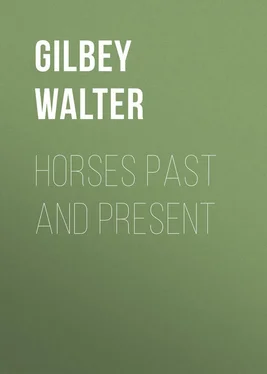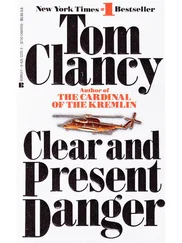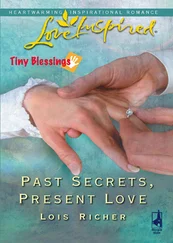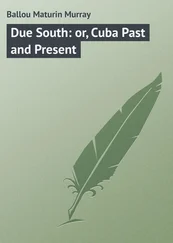Walter Gilbey - Horses Past and Present
Здесь есть возможность читать онлайн «Walter Gilbey - Horses Past and Present» — ознакомительный отрывок электронной книги совершенно бесплатно, а после прочтения отрывка купить полную версию. В некоторых случаях можно слушать аудио, скачать через торрент в формате fb2 и присутствует краткое содержание. Жанр: Природа и животные, foreign_antique, foreign_prose, на английском языке. Описание произведения, (предисловие) а так же отзывы посетителей доступны на портале библиотеки ЛибКат.
- Название:Horses Past and Present
- Автор:
- Жанр:
- Год:неизвестен
- ISBN:нет данных
- Рейтинг книги:3 / 5. Голосов: 1
-
Избранное:Добавить в избранное
- Отзывы:
-
Ваша оценка:
- 60
- 1
- 2
- 3
- 4
- 5
Horses Past and Present: краткое содержание, описание и аннотация
Предлагаем к чтению аннотацию, описание, краткое содержание или предисловие (зависит от того, что написал сам автор книги «Horses Past and Present»). Если вы не нашли необходимую информацию о книге — напишите в комментариях, мы постараемся отыскать её.
Horses Past and Present — читать онлайн ознакомительный отрывок
Ниже представлен текст книги, разбитый по страницам. Система сохранения места последней прочитанной страницы, позволяет с удобством читать онлайн бесплатно книгу «Horses Past and Present», без необходимости каждый раз заново искать на чём Вы остановились. Поставьте закладку, и сможете в любой момент перейти на страницу, на которой закончили чтение.
Интервал:
Закладка:
Walter Gilbey
Horses Past and Present
This brief history of the Horse in England to the close of the nineteenth century is a compilation which, it is hoped, may prove useful as well as interesting.
So much has been done to improve our breeds of horses since the year 1800, and so many and important have been the changes in our methods of travel, in the use of heavy horses in agriculture, in hunting, racing and steeplechasing, that the latter portion of the book might be amplified indefinitely.
It is not thought necessary to do more than touch briefly upon the more important events which have occurred during Her Majesty’s reign.
The interesting and instructive work by Mr. Huth, which contains the titles of all the books written in all languages relating to the Horse shows that the number published up to the year 1886 exceeds 4,060: and since that date, works on the Horse, embracing veterinary science, breeding, cavalry, coaching, racing, hunting and kindred subjects, have been issued from the publishing houses of Europe at the rate of about two per month. During the ten years 1886-95 upwards of 232 such works were issued, and there has been no perceptible decrease during the last four years.
Under these circumstances an apology for adding to the mass of literature on the Horse seems almost necessary.
Elsenham Hall, Essex,
November, 1900.
HORSES PAST AND PRESENT
First among animals which man has domesticated, or brought under control to do him service, stands the horse. The beauty of his form, his strength, speed and retentive memory, alike commend him to admiration; the place he holds, whether in relation to our military strength, our commercial and agricultural pursuits, or our pleasures, is unique. Whether as servant or companion of man the horse stands alone among animals.
There can be no doubt but that the horse was broken to man’s service at an early period of the world’s history. The art of taming him was first practised by the peoples of Asia and Africa, who earliest attained to a degree of civilisation; but whether he was first ridden or driven is a question which has often been debated with no definite result. The earliest references to the use of horses occur in the Old Testament, where numerous passages make mention of chariots and horsemen in connection with all warlike operations.
BEFORE THE CONQUEST
From very remote times England has possessed horses which her inhabitants turned to valuable account, as we find occasion to note elsewhere 1 1 Ponies Past and Present. By Sir Walter Gilbey, Bart, published by Vinton & Co., Limited.
; and the farther she advanced on the path of civilisation the wider became the field for utility open to the horse. To the necessity for adapting him to various purposes, to the carrying of armour-clad soldiery, to draught, pack work, hawking, hunting, coaching, for use in mines where ponies are required, &c., we owe the several distinct breeds which we now possess in such perfection.
In early times horses were held the most valuable of all property in Britain; we see evidence of the importance attached to them in the figures on ancient coins. The Venerable Bede states that the English first used saddle horses about the year 631, when prelates and other Church dignitaries were granted the privilege of riding. This statement needs qualification, for it is certain that riding was practised by the ancient Britons and their descendants; we shall no doubt be right in reading Bede’s assertion to refer to saddles , which were in use among the nations of Eastern Europe in the fourth century. The ancient Greek and Roman horsemen rode barebacked; but a law in the Theodosian Code, promulgated in the fifth century, by which the weight of a saddle was limited to 60 Roman lbs., proves that saddles were then in general use in the Roman Empire.
The Saxon saddle was little more than a pad; this would give no very secure seat to the rider, and therefore we cannot marvel that the art of fighting on horseback remained unknown in Britain until it was introduced by our Norman conquerors. Even after that epoch only the heavily-mailed knights fought from the saddle; for some centuries subsequently the lightly armed horsemen dismounted to go into action, leaving their horses in charge of those who remained with the baggage of the army in the rear. It would be wrong to call these troops cavalry; they employed horses only for the sake of greater mobility, and were what in modern phrase are styled mounted infantry.
Saxons and Danes brought horses of various breeds into England, primarily to carry on their warfare against the British; the most useful of these were horses of Eastern blood, which doubtless performed valuable service in improving the English breeds. The Saxon and Danish kings of necessity maintained large studs of horses for military purposes, but whether they took measures to improve them by systematic breeding history does not record.
King Alfred (871 to 899) had a Master of the Horse, named Ecquef, and the existence of such an office indicates that the Royal stables were ordered on a scale of considerable magnitude.
King Athelstan (925-940) is entitled to special mention, for it was he who passed the first of a long series of laws by which the export of horses was forbidden. Athelstan’s law assigns no reason for this step; but the only possible motive for such a law must have been to check the trade which the high qualities of English-bred horses had brought into existence. At no period of our history have we possessed more horses than would supply our requirements, and Athelstan’s prohibition of the export of horses beyond sea, unless they were sent as gifts, was undoubtedly due to a growing demand which threatened to produce scarcity. This king saw no objection to the importation of horses: he accepted several as gifts from Continental Sovereigns, and evidently attached much value to them, for in his will he made certain bequests of white horses and others which had been given him by Saxon friends.
WILLIAM THE CONQUEROR (1066-1087)
William the Conqueror brought with him many horses from Normandy when he invaded England. Many of these were Spanish horses, if we may apply to the famous Bayeux tapestry the test of comparison. William himself, at Hastings, rode a Spanish horse, which had been presented to him by his friend, Alfonso of Spain, and the riders on horseback on the tapestry show that the Norman knights rode horses similar in all respects to that of their leader. They are small, probably not exceeding 14 hands, and of course all stallions. Berenger 2 2 “The History and Art of Horsemanship.” By Richard Berenger, Gentleman of the Horse to George III., published 1771.
describes these horses as of a class adapted to the “purposes of war and the exhibition of public assemblies.”
There is nothing to tell us when horses were first used in agriculture in England; the earliest mention of such, some considerable research has revealed, is the reference to “four draught horses” owned by the proprietor of an Essex manor in the reign of Edward the Confessor (1042-1066). Under the Norman and Plantagenet kings the plough appears to have been adapted for draught by either oxen or horses. The former undoubtedly were the more generally used, and continued in use until comparatively recent times in some parts of the country.
One of the pieces of tapestry worked in Bayonne in 1066 shows the figure of a man driving a horse harnessed to a harrow. This is the earliest pictorial evidence we possess of the employment of the horse in field labour.
The Conqueror and his followers came from a country in which agriculture was in a more advanced state than it was in England, and it cannot be doubted that the Normans did much to promote the interests of English husbandry.
Читать дальшеИнтервал:
Закладка:
Похожие книги на «Horses Past and Present»
Представляем Вашему вниманию похожие книги на «Horses Past and Present» списком для выбора. Мы отобрали схожую по названию и смыслу литературу в надежде предоставить читателям больше вариантов отыскать новые, интересные, ещё непрочитанные произведения.
Обсуждение, отзывы о книге «Horses Past and Present» и просто собственные мнения читателей. Оставьте ваши комментарии, напишите, что Вы думаете о произведении, его смысле или главных героях. Укажите что конкретно понравилось, а что нет, и почему Вы так считаете.












